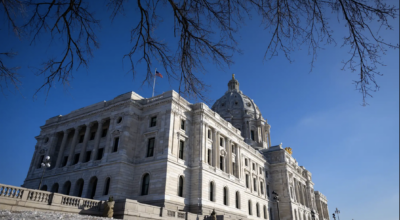Trauma makes deeper impression on children
Published 7:05 am Wednesday, June 30, 2010
Editor’s note: This is the second in a three-part series about dealing with the trauma of disaster. The Tribune interviewed Rose Olmsted, coordinator of the Freeborn County Crisis Response Team, who has been trained under the National Organization of Victim Assistance model. The Crisis Response Team has been assisting people affected by the June 17 tornadoes.
Because children have less life experience than adults, they often have different reactions to the trauma of disaster than someone older would. The way they process trauma also depends on their age.
Freeborn County Crisis Response Team Coordinator Rose Olmsted said children’s reaction to trauma involves not only what they saw, heard, felt or smelled, but also how the adults around them reacted to the same trauma.
“If mom and dad are falling apart, or if grandma and grandpa are falling apart, that’s critical,” Olmsted said.
During the June 17 tornadoes, for example, children may have seen things dropping around them while they were in the basement with their parents. They might have seen their animals — which they sometimes think of as pets — harmed or killed, she said.
Some children were left wondering if a tornado will happen again and if they are safe to stay at the same farm or house they’ve lost.
Olmsted said regardless of the children’s reaction, parents and adults must remember to make kids part of the recovery.
The following is a breakdown of reactions children may have after a disaster based on their age:
Newborns to 2 years: These children will manifest high anxiety through crying, biting, throwing objects, thumb sucking or agitated behavior.
While it is unlikely they will retain a strong mental memory of the trauma, the child may retain a physical memory.
Ages 2 to 6: These children take in the catastrophe swiftly and often engage in re-enactments and play about the traumatic event. They may exhibit anxious attachment behaviors toward their caretakers, such as physically holding onto adults, not wanting to sleep alone and wanting to be held. Others yet may become mute, withdrawn or still.
Children this age may also regress in their physical independence, may have nightmares and may be threatened by any change in daily routines.
Ages 6 to 10: Children in this age group express themselves through play, whether its art, drawing or dance.
They may experience radical changes in behavior, may lose their trust in adults and may regress to previous development stages.
It’s also not uncommon for the children this age to have headaches, stomach aches or dizziness. They may be tentative about their growth towards independence.
Girls ages 10 to 12 and boys ages 12 to 14: These children become more childlike in attitude after trauma, may be angry at the unfairness of disaster and may also often suppress their feelings to avoid confronting the disaster.
They may also have a sense of a foreshortened future, may be judgmental about their own behavior or may have a sense of meaninglessness or purposelessness of existence.
Ages 12 or 13 to 18: Adolescents most resemble adult post-traumatic stress reactions.
They may feel anger, shame, betrayal and act out their frustration through rebellious acts in school. They may want to move into the adult world as soon as possible to get away from their experience and establish control over their environment.
They are often suspicious and guarded in their reaction to others and may develop other problems, including eating and sleeping disorders, depression and problems with drug alcohol abuse, among others.
To help children through these feelings, Olmsted said parents and adults need to help the children rebuild and reaffirm attachments and relationships. Children need to know someone is taking care of them and may need physical closeness.
Parents also need to talk to their children about the tragedy, and then in return children need to share their feelings. This can be done vocally or through reenactments or playing. Parents and adults should be prepared to talk about the event, even if its just sporadically.
Young children, especially, need to know that the tornado was not their fault and that it is normal to feel sad, angry or afraid.
Children want as much factual information as possible about what happened.
Olmsted said one way children can express their feelings is through art. The children can draw a picture of themselves before, during or after the tornadoes.
She advised parents to limit how much their children watch the disaster repeatedly on TV.
Parents should reaffirm the future.
“It’s part about taking control again,” she said.
The Freeborn County Crisis Response Team is also handing out a coloring book titled “A Scary Thing Happened,” that has been designed to help children cope from disasters. Families who would like coloring books are encouraged to call Olmsted at 402-2467.



